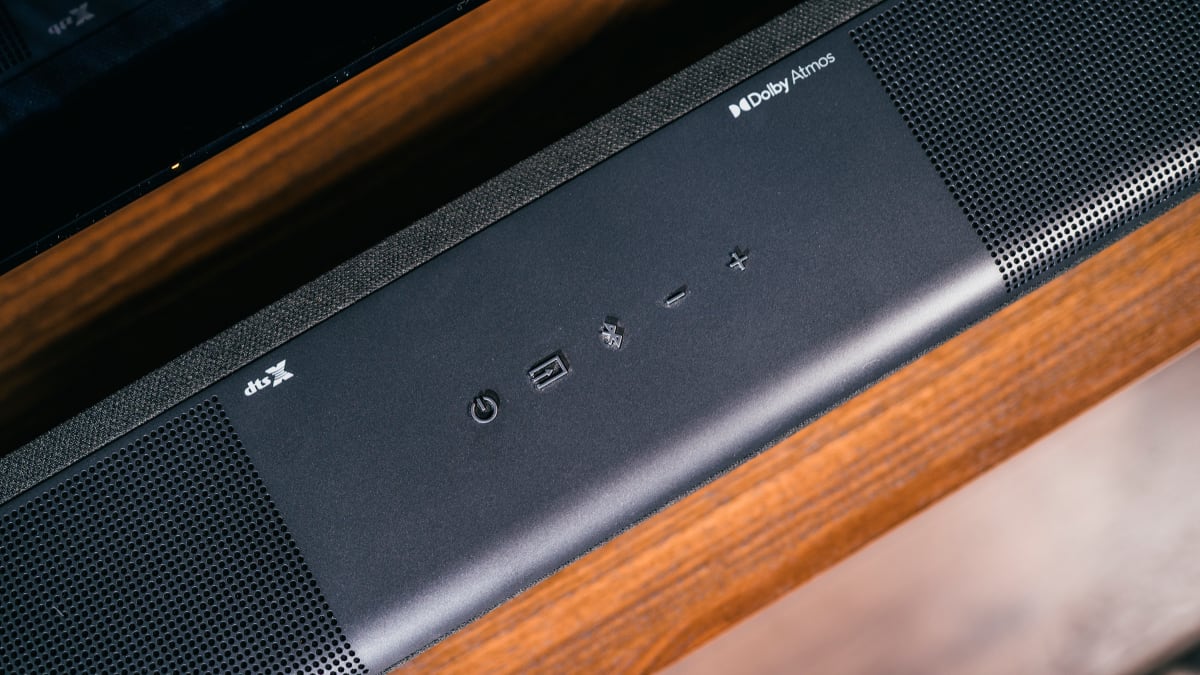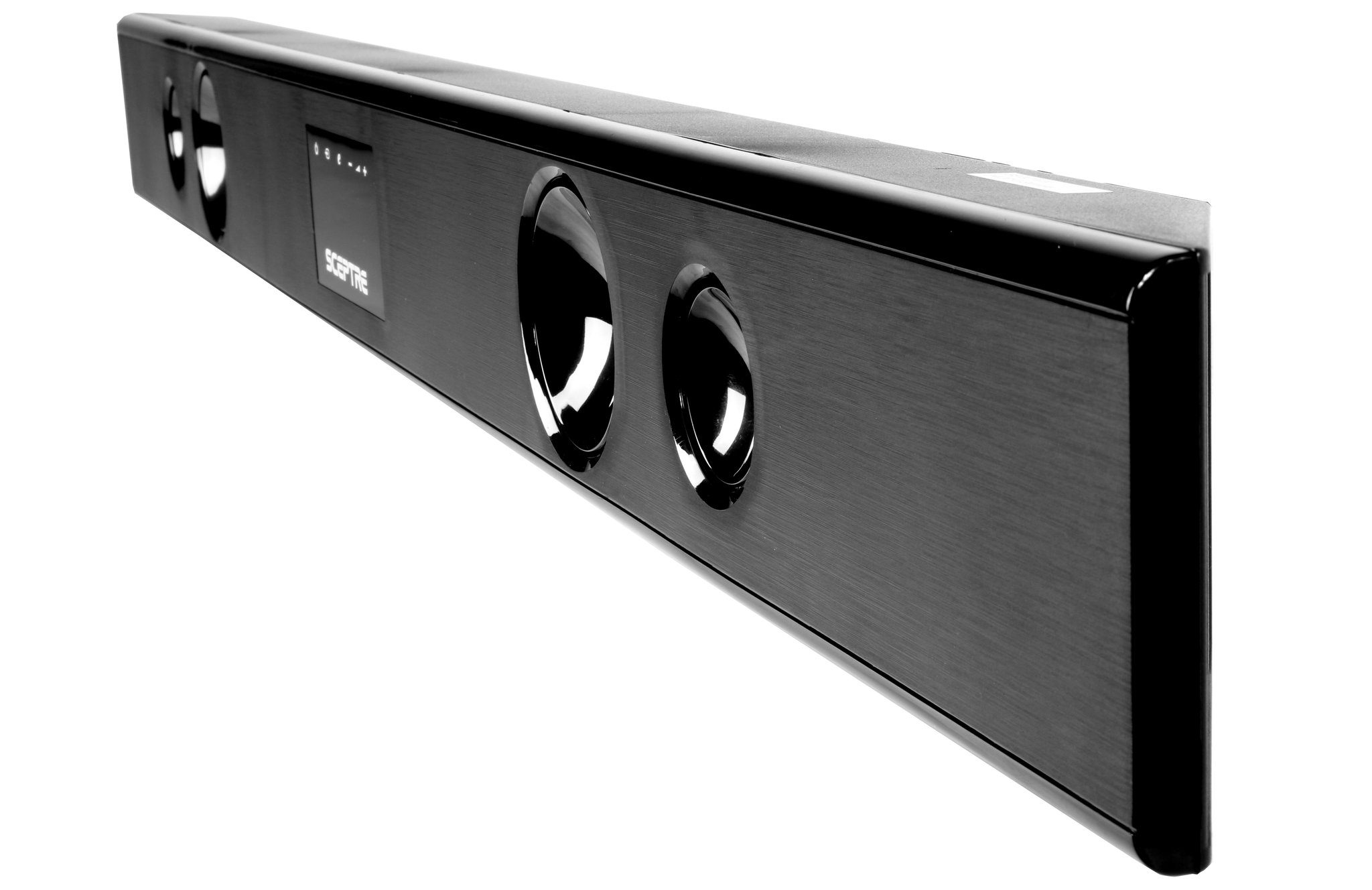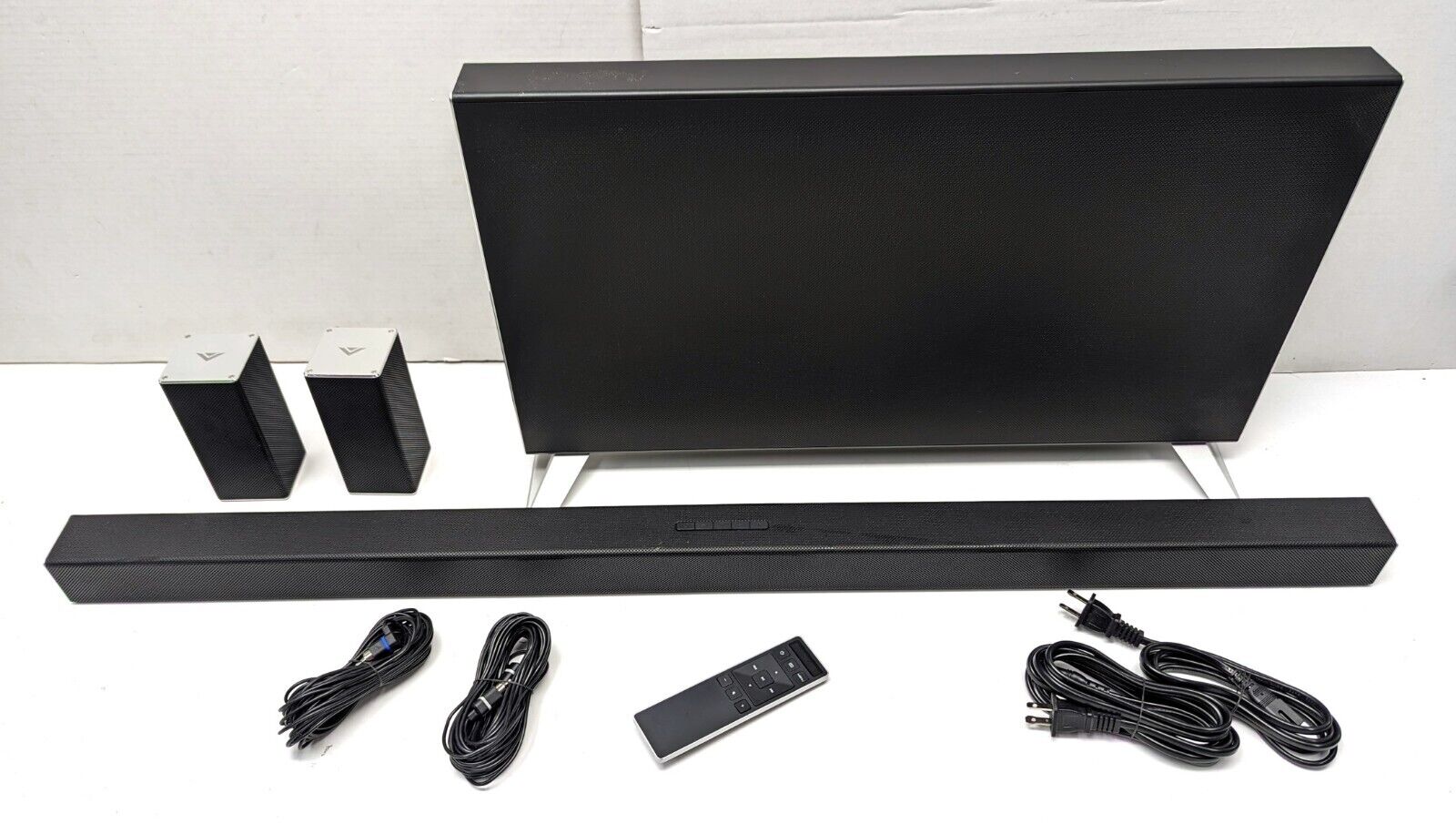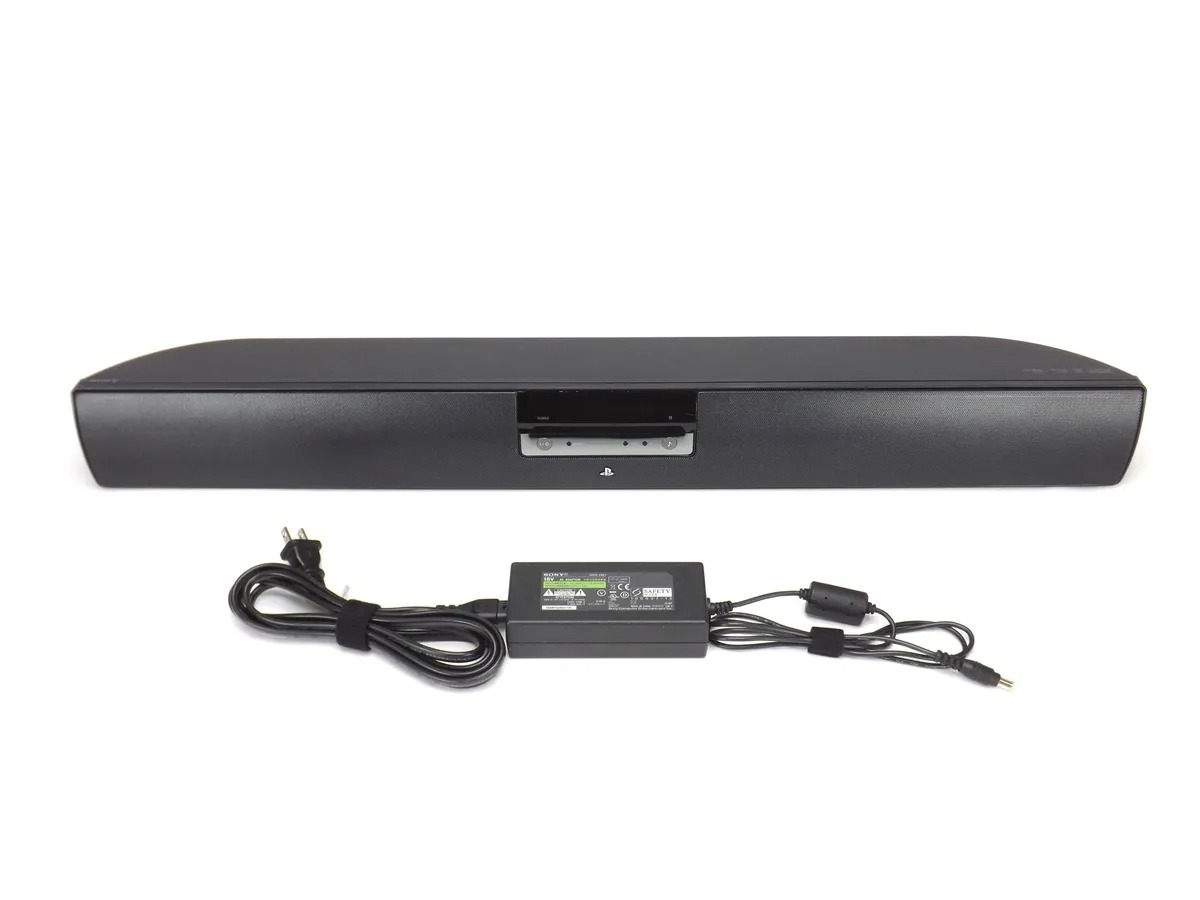Home>Production & Technology>Sound Bar>What Does 3.1 Sound Bar Mean


Sound Bar
What Does 3.1 Sound Bar Mean
Modified: January 22, 2024
Discover what the term "3.1 Sound Bar" implies and how it enhances your audio experience. Explore the features and benefits of this audio device.
(Many of the links in this article redirect to a specific reviewed product. Your purchase of these products through affiliate links helps to generate commission for AudioLover.com, at no extra cost. Learn more)
Table of Contents
Introduction
Welcome to the world of sound bars, where audio technology meets convenience and style. Sound bars have become increasingly popular in recent years as an alternative to traditional home theater systems. These sleek and compact devices offer an immersive audio experience without the need for multiple speakers and complicated wiring setups. Whether you’re a movie enthusiast, a gamer, or simply a music lover, a sound bar can enhance your entertainment experience.
In this article, we will explore the world of 3.1 sound bars. You may be wondering, what exactly does 3.1 mean? How does it differ from other sound bar configurations? And why should you consider investing in a 3.1 sound bar system? We will answer all these questions and more as we delve into the world of 3.1 sound bars.
Sound bars are designed to provide a high-quality audio experience, bringing movies, games, and music to life. They are often slim and sleek in design, making them a perfect fit for modern living spaces. With their built-in speakers and advanced audio technologies, sound bars can deliver an impressive soundstage that envelops you in sound.
Now, let’s take a closer look at what exactly a 3.1 sound bar entails and how it can enhance your audio experience.
Definition of Sound Bar
Before we dive into the specifics of 3.1 sound bars, let’s start with a definition of what a sound bar actually is. Simply put, a sound bar is a type of speaker system that is designed to provide high-quality audio in a compact and streamlined form.
Unlike traditional home theater systems that require multiple speakers placed throughout the room, a sound bar is a single unit that can be placed directly in front of your TV or mounted on a wall. It is typically longer and narrower in shape, resembling a horizontal bar. Hence the name “sound bar”.
Sound bars are popular for several reasons. They offer an easy and convenient way to upgrade your TV’s audio without the need for additional speakers and complicated setup. They are also aesthetically pleasing, seamlessly blending in with your home decor.
While some sound bars are designed specifically for TV audio enhancement, others can also be used for streaming music, gaming, and creating a surround sound experience.
Now that we have a better understanding of what a sound bar is, let’s explore the specific features and benefits of 3.1 sound bars.
What is 3.1 Sound Bar?
A 3.1 sound bar is a type of sound bar system that consists of three speakers and one subwoofer. The “3” represents the three speakers, while the “1” represents the subwoofer. This configuration is designed to provide a more immersive and balanced audio experience compared to sound bars with fewer speakers.
The three speakers in a 3.1 sound bar system are typically positioned in the main sound bar unit. They are strategically placed to create a wider soundstage and deliver clear and detailed audio. The left and right speakers are responsible for the mid-range and high-frequency sounds, while the center speaker focuses on dialogues and vocals.
Now, let’s talk about the subwoofer. The subwoofer is a separate unit that is responsible for handling low-frequency sounds, particularly deep bass. It adds depth and richness to the overall audio experience, making explosions, thunder, and music beats more impactful and immersive.
The inclusion of a subwoofer in a 3.1 sound bar system allows for a more balanced and dynamic sound reproduction. It enhances the audio quality by providing the lower frequency range that the main sound bar unit may not be capable of producing on its own.
One key advantage of a 3.1 sound bar system over a traditional sound bar or a 2.1 system is its improved dialogue clarity. With the center speaker dedicated to handling dialogues, it ensures that conversations in movies and TV shows are clear and crisp, even during action-packed scenes and background noise.
Overall, a 3.1 sound bar system offers a more immersive and well-rounded audio experience, providing a significant upgrade from standard TV speakers or even basic sound bars.
Now that we have a clear understanding of what a 3.1 sound bar is, let’s explore the benefits of investing in one.
The Benefits of 3.1 Sound Bar Systems
Investing in a 3.1 sound bar system offers several advantages that can greatly enhance your audio experience. Whether you enjoy watching movies, playing video games, or simply listening to music, here are some of the benefits you can expect:
- Improved Sound Quality: One of the primary benefits of a 3.1 sound bar system is the enhanced sound quality it provides. With three speakers and a dedicated subwoofer, you can enjoy a more immersive and balanced audio experience. The separate subwoofer ensures deep and powerful bass, while the main sound bar unit delivers clear mid-range and high-frequency sounds. This combination creates a dynamic and rich soundstage that brings your movies, music, and games to life.
- Clear Dialogue: With a dedicated center speaker in the 3.1 sound bar system, dialogues in movies and TV shows become much clearer and easier to understand. This is particularly beneficial in action-packed scenes or when there is background noise that can normally drown out the conversations. The center speaker ensures that the vocals and dialogues are emphasized, allowing you to fully immerse yourself in the story without missing any important details.
- Wide Soundstage: The inclusion of three speakers in the sound bar unit creates a wider soundstage. This means that the audio appears to come from different directions, enhancing the sense of depth and realism. You can enjoy a more spacious audio experience, as if you were surrounded by multiple speakers. This is especially beneficial for movies and games that are designed with surround sound in mind.
- Simpler Setup: Compared to a traditional home theater system with multiple speakers, a 3.1 sound bar system offers a much simpler setup. You only need to connect the sound bar unit to your TV and plug in the subwoofer. There are no complicated wiring or speaker placement requirements. This makes the 3.1 sound bar system a convenient and practical choice, especially for those who prefer a sleek and minimalist setup.
These are just a few of the many benefits that a 3.1 sound bar system brings to your audio setup. With improved sound quality, clear dialogue, wide soundstage, and simplified setup, you can transform your entertainment experience and enjoy immersive audio like never before.
Now that we understand the benefits of a 3.1 sound bar system, let’s dive into the components that make up this setup.
Components of a 3.1 Sound Bar Setup
Now that we have explored the benefits of a 3.1 sound bar system, let’s take a closer look at the components that make up this setup. A 3.1 sound bar system consists of the following key elements:
- Main Sound Bar Unit: The main sound bar unit is the central component of the system. It houses the three speakers responsible for producing the mid-range and high-frequency sounds. The main sound bar unit is typically positioned directly in front of the TV or mounted on a wall, providing a sleek and compact design.
- Center Speaker: The center speaker plays a crucial role in a 3.1 sound bar system. It is responsible for handling the dialogues and vocals in movies and TV shows. Placed in the center of the main sound bar unit, it ensures clear and crisp sound reproduction for conversations and vocal performances.
- Left and Right Speakers: The left and right speakers in a 3.1 sound bar system are positioned on either side of the center speaker. They are responsible for producing the mid-range and high-frequency sounds, including background music, sound effects, and ambient noise. These speakers work together with the center speaker to create an immersive audio experience.
- Subwoofer: The subwoofer is a separate unit that is responsible for handling the low-frequency sounds, particularly deep bass. It adds depth and impact to the audio, enhancing the overall cinematic experience. The subwoofer is usually placed in a different location, such as beside or behind the viewing area, to distribute the bass frequencies evenly.
These components work together harmoniously to create a balanced and immersive audio experience. The main sound bar unit produces clear mid-range and high-frequency sounds, while the center speaker ensures dialogue clarity. The left and right speakers fill the room with detailed audio, and the subwoofer adds depth and richness to the low-frequency sounds.
Now that we understand the components of a 3.1 sound bar setup, let’s explore how these systems function and deliver their impressive audio performance.
How Does a 3.1 Sound Bar Work?
Understanding how a 3.1 sound bar works can give you a better appreciation of its audio capabilities. Let’s break it down:
1. Main Sound Bar Unit: The main sound bar unit houses the three speakers – left, center, and right. Each speaker is responsible for producing specific audio frequencies. The left and right speakers handle the mid-range and high-frequency sounds, providing detailed audio for music, sound effects, and ambient noise. The center speaker is dedicated to handling dialogues and vocals, ensuring clear and focused reproduction of voices.
2. Subwoofer: The separate subwoofer unit is responsible for handling the low-frequency sounds, particularly the deep bass. It creates a powerful and impactful audio experience, enhancing the overall richness and depth of the sound. The subwoofer is strategically positioned to distribute the bass evenly throughout the room, creating a more immersive experience.
3. Signal Processing: The 3.1 sound bar system incorporates advanced signal processing technology. It analyzes the audio signals coming from the media source (such as a TV or a gaming console) and optimizes the sound reproduction. This technology ensures that the audio is balanced, clear, and immersive, regardless of the content you are listening to.
4. Sound Modes and Equalization: Many 3.1 sound bar systems offer various sound modes and equalization settings. These settings allow you to customize the sound to suit your preferences and the content you are consuming. For example, you might have a movie mode that enhances dialogue clarity and emphasizes surround effects, or a music mode that enhances the bass and provides a more immersive audio experience.
5. Wireless Connectivity: Most 3.1 sound bar systems come with wireless connectivity options. This enables you to connect the sound bar to your TV or other devices without the need for cumbersome cables. Wireless connectivity also allows you to stream music from your smartphone or tablet, further expanding the versatility and convenience of the system.
All of these components and technologies work together to deliver an immersive and high-quality audio experience. The combination of the main sound bar unit and the subwoofer, along with signal processing and customizable sound settings, ensures that you can enjoy your movies, games, and music in a way that truly engages your senses.
Now that we understand how a 3.1 sound bar works, let’s move on to the next step: choosing the right 3.1 sound bar for your needs.
Choosing the Right 3.1 Sound Bar for Your Needs
When it comes to choosing the right 3.1 sound bar for your needs, there are several factors to consider. Here are some key considerations to help you make an informed decision:
- Audio Quality: Look for a 3.1 sound bar that provides excellent audio quality. Consider the power output, frequency response, and speaker configuration to ensure that it can deliver clear and immersive sound.
- Connectivity Options: Check what connectivity options the sound bar offers. Most 3.1 sound bars come with HDMI, optical, and Bluetooth connections. Ensure that the sound bar has the necessary ports to connect to your TV and other devices.
- Smart Features: Some 3.1 sound bars come with smart features, such as built-in voice assistants (like Amazon Alexa or Google Assistant) or compatibility with streaming services. Consider whether these features align with your preferences and if they would enhance your overall user experience.
- Size and Design: Consider the size and design of the sound bar to ensure that it fits well within your living space. Measure the available space in front of your TV or the area where you plan to mount the sound bar to ensure a proper fit.
- Budget: Set a budget for your 3.1 sound bar purchase. While there are options available at various price points, it’s important to find a balance between your budget and the features and audio quality you desire.
- User Reviews: Read user reviews and expert opinions about the sound bars you are considering. This can provide valuable insights into the performance, reliability, and user satisfaction of the product.
- Brand Reputation: Consider the reputation and track record of the brand manufacturing the sound bar. Look for brands known for their quality and customer support to ensure a reliable and satisfying purchase.
By carefully evaluating these factors, you can select a 3.1 sound bar that meets your audio requirements and enhances your entertainment experience. Remember, it’s important to find a sound bar that strikes the right balance between audio performance, connectivity options, design, and your budget.
Once you’ve chosen the perfect 3.1 sound bar, the next step is to set it up and configure it to create an ideal audio environment in your home.
Common Features of 3.1 Sound Bar Systems
3.1 sound bar systems offer a range of features to enhance your audio experience. While individual models may have unique characteristics, here are some common features you can expect to find in 3.1 sound bar systems:
- Wireless Subwoofer: Most 3.1 sound bar systems come with a separate wireless subwoofer. This allows for flexible placement within your space and eliminates the need for long cables. The wireless subwoofer enhances the bass response, adding depth and impact to your audio.
- Bluetooth Connectivity: The ability to connect your sound bar to other devices via Bluetooth is a common feature in 3.1 sound bar systems. This allows you to stream music wirelessly from your smartphone, tablet, or other compatible devices, expanding the versatility of the system.
- Multiple Sound Modes: Many 3.1 sound bar systems offer various sound modes to optimize the audio for different types of content. These modes may include movie mode, music mode, gaming mode, or a night mode for quieter viewing. Each mode is designed to enhance specific audio characteristics for an immersive experience.
- Virtual Surround Sound: While not the same as a full surround sound system, some 3.1 sound bar systems incorporate virtual surround sound technology. This feature uses advanced digital processing to simulate a surround sound experience, creating a wider and more immersive audio environment.
- HDMI ARC (Audio Return Channel): HDMI ARC is a feature that allows the audio from your TV to be sent back to the sound bar through a single HDMI cable. This simplifies the connectivity and setup process, as it eliminates the need for multiple cables and configurations.
- Voice Control: Certain 3.1 sound bar systems offer built-in voice control functionality. This allows you to control the sound bar and other compatible devices using voice commands, making it more convenient to operate and navigate through different settings or streaming services.
- EQ Settings: Some 3.1 sound bar systems provide equalizer (EQ) settings, allowing you to customize the audio to suit your preferences. You can adjust the bass, treble, and other audio parameters to create a sound profile that matches your personal taste.
- Compatibility with Smart Assistants: Several 3.1 sound bar systems are compatible with popular smart assistants such as Amazon Alexa or Google Assistant. This allows you to control the sound bar using voice commands, access streaming services, and integrate it with your smart home ecosystem.
These are just a few of the common features found in 3.1 sound bar systems. It’s essential to consider your specific needs and preferences when choosing a sound bar that offers the features that align with your requirements.
Now that we have explored the common features, let’s move on to the next step: setting up your 3.1 sound bar system for optimal performance.
Setting Up a 3.1 Sound Bar System
Setting up a 3.1 sound bar system is relatively straightforward and can greatly enhance your audio experience. Here are the general steps to follow:
- Placement: Decide where you want to place your sound bar and subwoofer. The sound bar is typically positioned directly in front of your TV, either placed on a stand or mounted on the wall. The subwoofer can be placed anywhere in the room, but it’s recommended to position it near a wall to distribute the bass evenly.
- Connections: Connect your sound bar to your TV using the appropriate cables. Most 3.1 sound bar systems offer HDMI and optical inputs. Use an HDMI cable or optical cable to connect the sound bar to your TV’s corresponding output. If your TV supports HDMI ARC, connect the sound bar to the HDMI ARC port on your TV for a simplified setup.
- Connect the Subwoofer: If your subwoofer is wireless, it will automatically connect to the sound bar once powered on. However, if it is a wired subwoofer, connect it to the sound bar using the provided cable. Follow the manufacturer’s instructions for a seamless connection.
- Power On and Configuration: Ensure that all components are properly connected and powered on. Use the sound bar’s remote control or interface to configure the settings and adjust the audio parameters as desired. This may include selecting sound modes, adjusting volume levels, and fine-tuning bass and treble using EQ settings.
- Testing and Placement Tweak: Play some familiar content and listen to the audio output. Fine-tune the placement of the sound bar and subwoofer to achieve optimal sound. Experiment with different positions and angles to determine the best audio performance and balance for your space.
- Additional Connections: If desired, connect other devices such as gaming consoles, Blu-ray players, or streaming devices to the sound bar using the available ports and cables. This allows you to enjoy audio from these sources through the sound bar system.
- Wireless Connectivity: If your sound bar offers Bluetooth connectivity, pair it with your smartphone, tablet, or other compatible devices. This allows you to wirelessly stream music or other audio content directly to the sound bar system.
It’s important to consult the user manual provided by the manufacturer for specific setup instructions tailored to your model. Following the instructions and guidelines will ensure that you achieve the best audio performance from your 3.1 sound bar system.
Now that your 3.1 sound bar system is properly set up, you can sit back, relax, and immerse yourself in the superior audio experience it delivers.
Conclusion
Choosing a 3.1 sound bar system can significantly enhance your audio experience, whether you’re watching movies, playing games, or listening to music. With the combination of three speakers and a dedicated subwoofer, a 3.1 sound bar system delivers immersive, clear, and balanced audio that brings your entertainment to life.
In this article, we explored what a 3.1 sound bar is and how it differs from other sound bar configurations. We discussed the benefits of investing in a 3.1 sound bar system, including improved sound quality, clear dialogue, wide soundstage, and simplified setup.
We also delved into the components that make up a 3.1 sound bar setup, such as the main sound bar unit, the center speaker, the left and right speakers, and the subwoofer. Understanding these components helps you make an informed decision when shopping for a 3.1 sound bar system.
We discussed how a 3.1 sound bar works, including its signal processing capabilities, sound modes, and wireless connectivity options. These features contribute to the enhanced audio experience and versatility of a 3.1 sound bar system.
When choosing the right 3.1 sound bar for your needs, consider factors such as audio quality, connectivity options, size and design, budget, user reviews, and brand reputation. These considerations ensure that you find a sound bar that meets your preferences and requirements.
In terms of setup, placing the sound bar and subwoofer optimally, connecting the necessary cables, configuring the settings, and fine-tuning the placement are crucial for achieving the best audio performance from your 3.1 sound bar system.
With all these considerations in mind, investing in a 3.1 sound bar system is a fantastic way to elevate your home audio setup and enjoy immersive sound. So, go ahead and choose the perfect 3.1 sound bar that suits your needs, and prepare to be amazed by the audio experience it provides!











